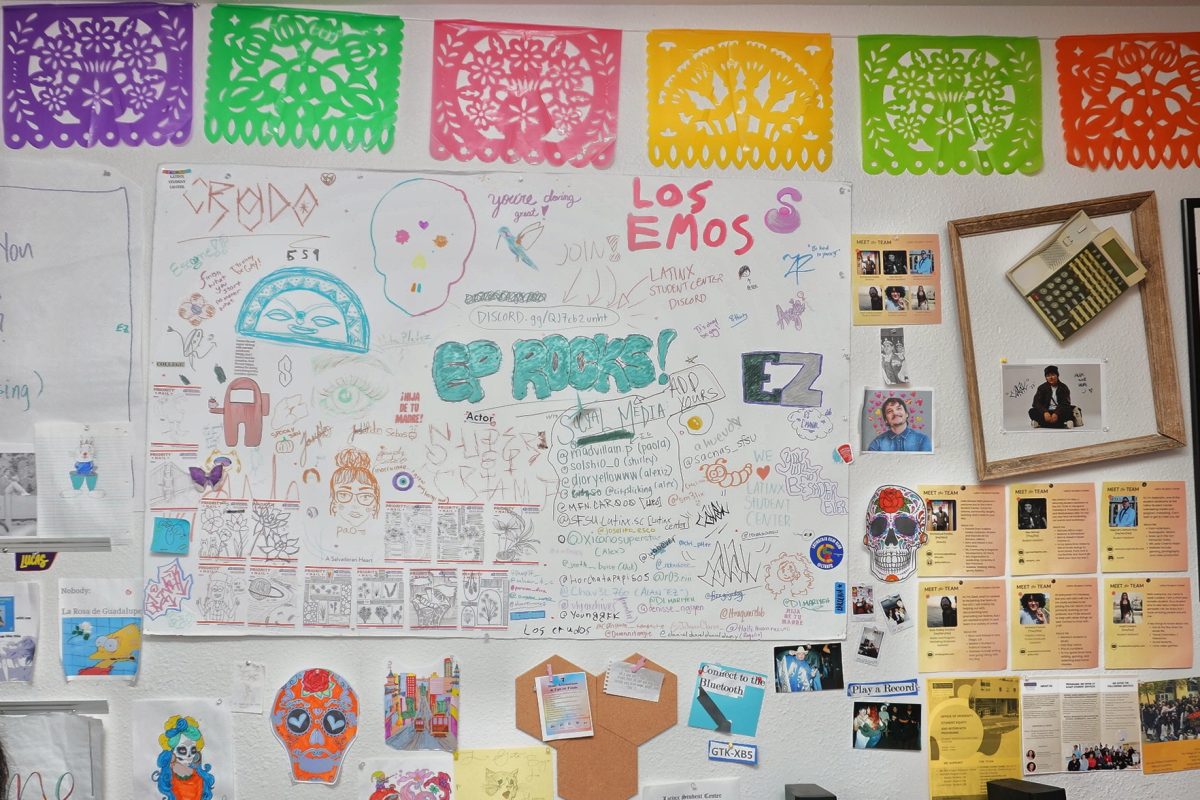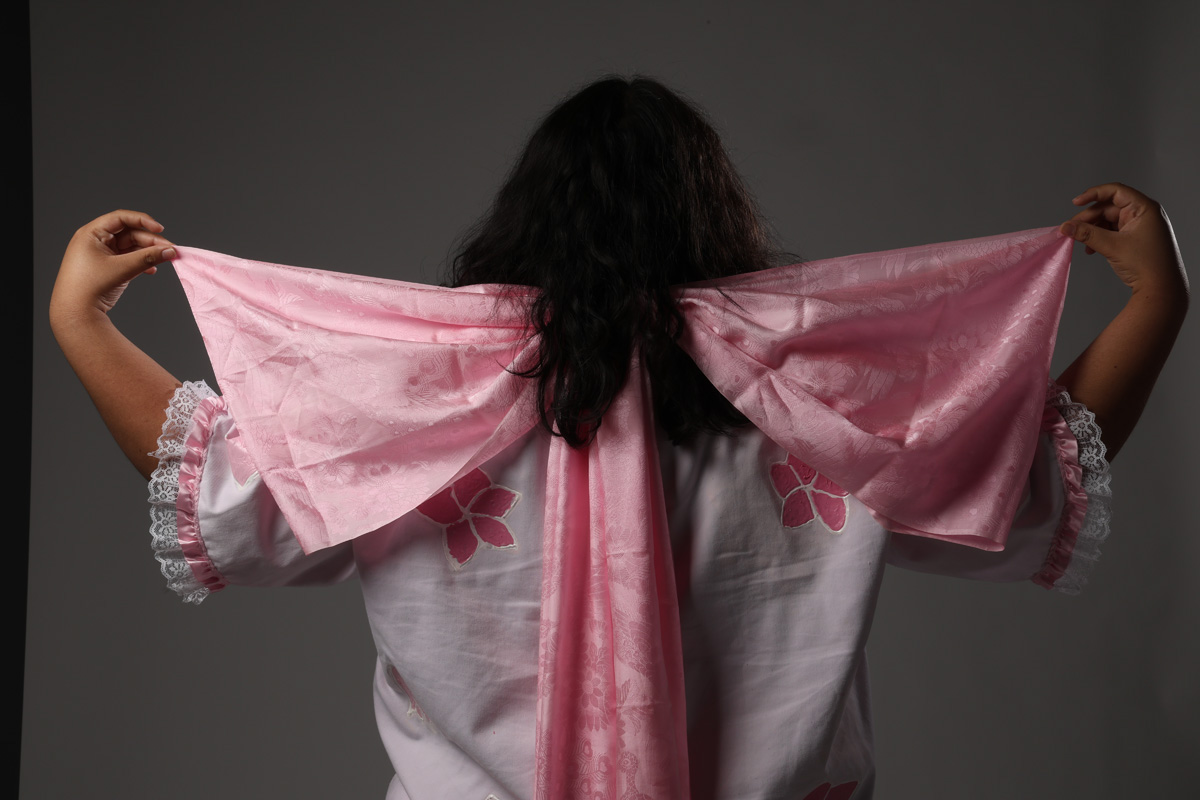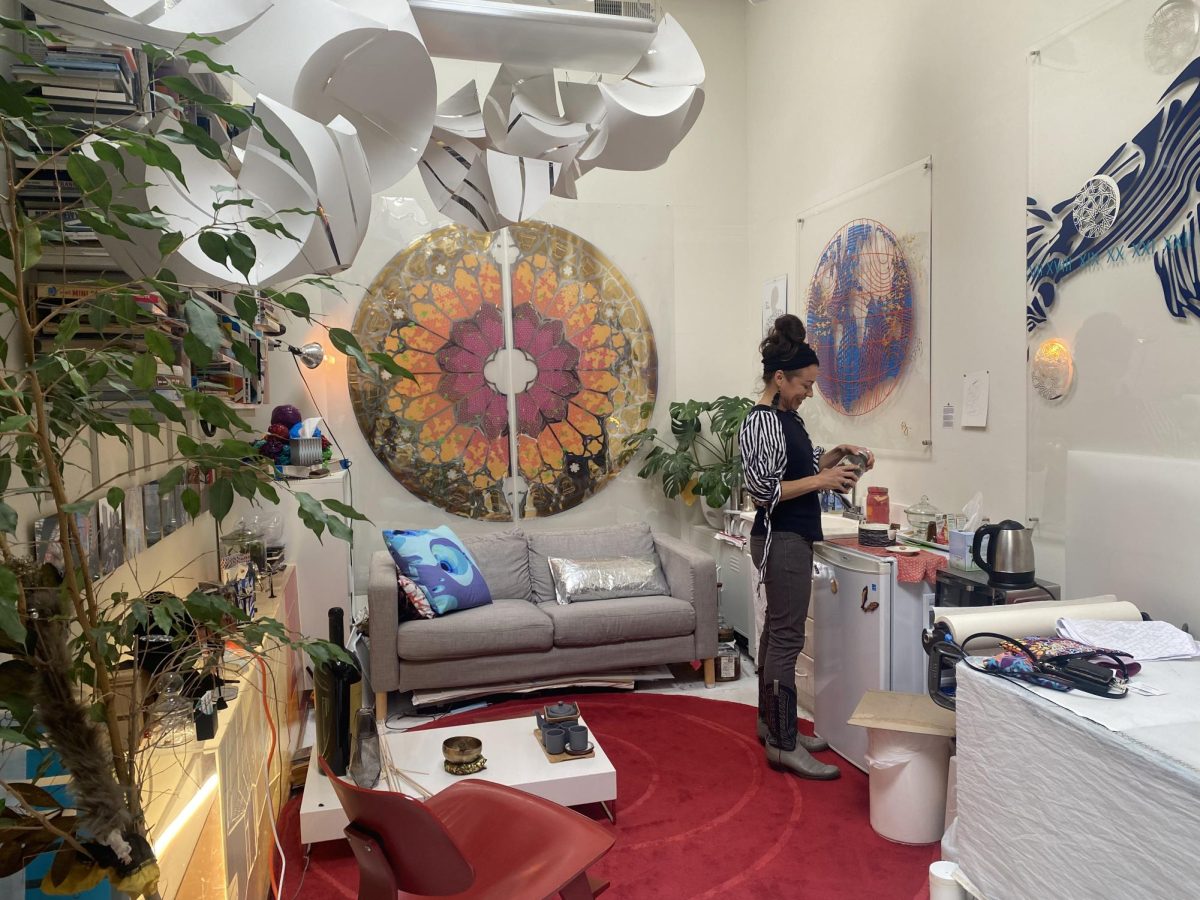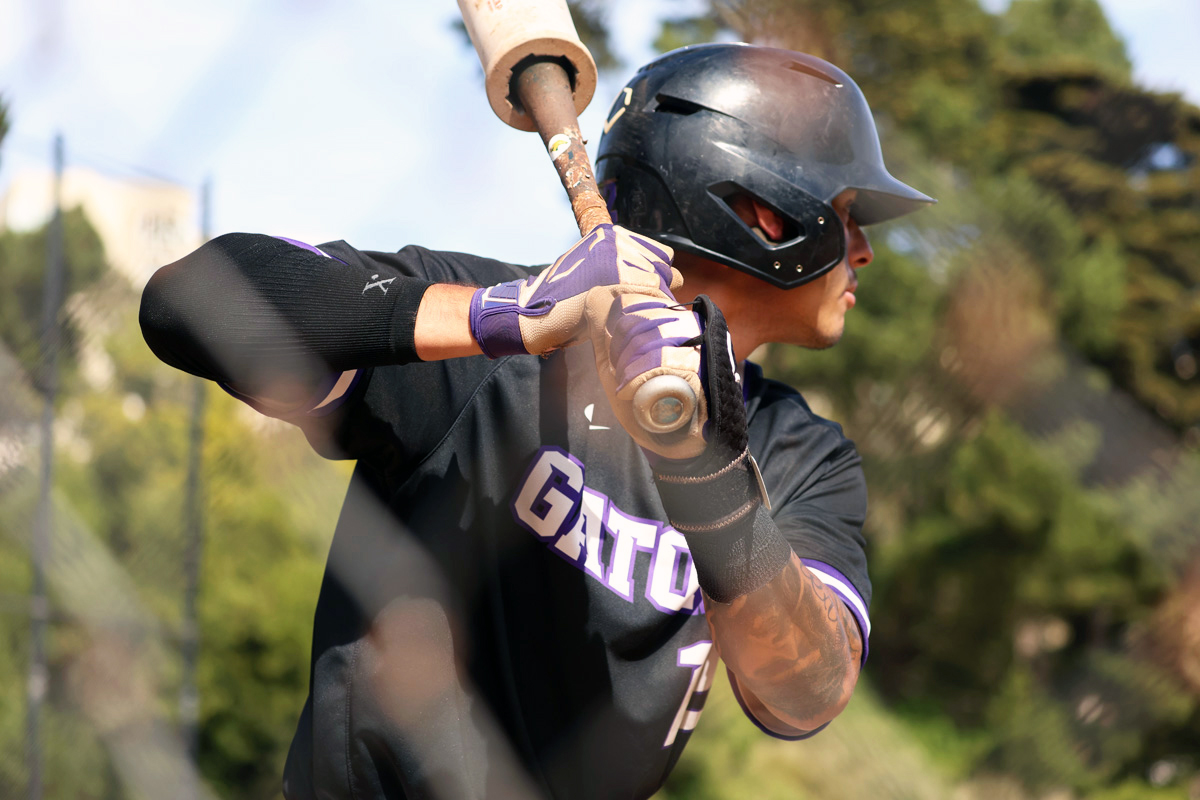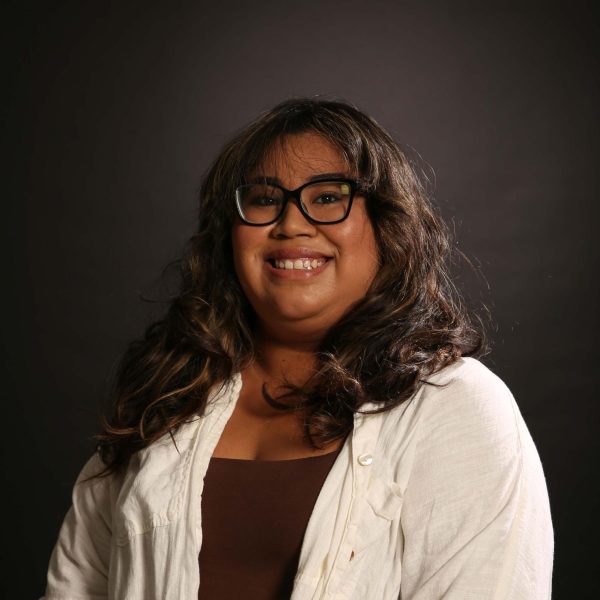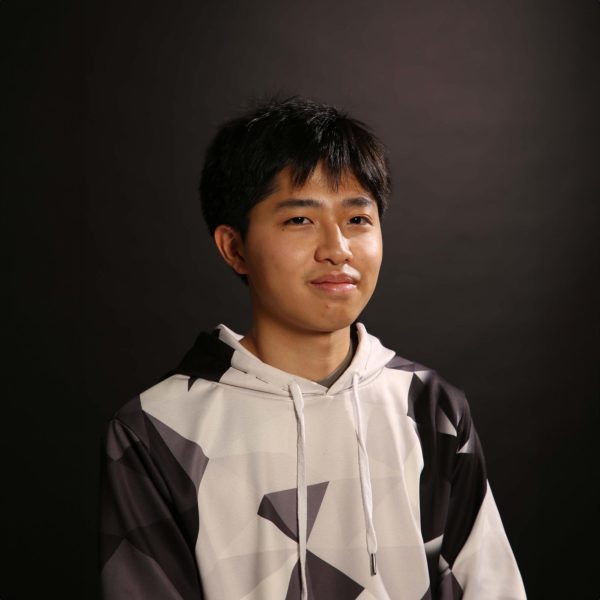Walking through the Latinx Student Center on campus, students are met with brightly colored flags and the occasional event for students to unite through culture. The center has provided a safe haven for students to explore their culture without judgment. College is the period when students begin to explore their identities and may navigate through an identity crisis within their cultural context.
Being Latin-American comes with misconceptions that can complicate one’s identity, especially for students raised in a different country than their parents. This journey of self-discovery involves untangling stereotypes and understanding their cultural roots. What does Latinx really mean at SF State?

Language
According to Latinos’ Views of and Experiences With the Spanish Language by Lauren Mora and Mark Hugo Lopez, 24% of Latinx adults say they can only carry on a conversation in Spanish a little or not at all. Many third- or higher-generation Latinxs are not Spanish speakers; close to two-thirds (65%) of third- or higher-generation Latinxs say they cannot carry on a conversation well in Spanish.
Recently on social media, the term “no sabo kid” has become a nickname given to those who do not speak Spanish fluently. This term came from young Latinx folks who would mistakenly say “No sabo,” which is the incorrect way to say “I don’t know” when asked a question in Spanish, when the proper way to answer is “No se.”
Tony Aguilar, who is Guatemalan-American, believes not speaking Spanish is a huge barrier to how communities will accept someone or how they will view someone’s identity as a whole. Aguliar’s parents did not teach them Spanish while growing up within a Black and brown community that spoke mainly Spanish.
“It made me the ‘other’ to not speak Spanish, and to this day a lot of people get frustrated at me and say ‘Why don’t you just learn it?’ And I have to explain to them that I have been learning it; I have [had] to self-teach myself for years and I’m still not great at it. I can hold down a bare minimum conversation, but if I wanna access academic papers in Spanish, that can never happen,” Aguilar said. “[This] could also cause a barrier when learning about your own indigeneity or learning about —for me specifically — holistic health.”
Even though the term “no sabo kid” can be seen as endearing, it does make one question whether speaking Spanish makes them feel less Latinx to the community as a whole. The report by Mora and Lopez also found that Latinx identity in the U.S. can be shaped by many factors such as speaking Spanish. In the study, 78% of Latinx adults said it is not necessary to speak Spanish, while 21% said it is.
Complexion
Colorism is an issue in many cultures including the Latinx community. According to a study titled “Measuring the Racial Identity of Latinos” by Luis Noe-Bustamanta, Ana Gonzalez-Barrera, Khadijah Edwards, Lauren Mora and Mark Hugo Lopez, the research indicates that only 17% of Latinos believe that others would perceive them as White when passing by. Individuals born in the U.S. are more likely to think this, with 28% of at least third-generation Latinos and 20% of second-generation Latinos expressing such views, compared to 13% among Latino immigrants.
Nicole Cortez, who is Salvadoran-American, is very involved with her culture but struggles when it comes to the assumptions made about her, as she is more fair in complexion. Skin color played a role in her thoughts of whether she was Hispanic enough compared to other people around her. At SF State, she feels left out of the cultural campus activities that happen due to her complexion.
“I feel like maybe they don’t see me as one of them because of how fair I am. I don’t look like anyone else here [at SF State]. There is a whole population that is also fair-skinned and I think they can feel the same way about it,” Cortez said. “We technically are a standard. A lot of people see being lighter [in complexion as] acceptable within the community but at the same time, we are not accepted in a way.”
Bárbara Abadía-Rexach, an assistant professor in SF State’s Latino/Latina studies department, is Puerto Rican, Caribbean and Latina. She feels as though she doesn’t belong to one box because she’s not Latina enough because she’s black, and not black enough because she’s Latina.
“We need to understand what is colorism, white privilege and our position, interpolation and self-identification. I self-identify as a Black person, but also because I’m treated as a Black person, not only here in the U.S. but also in Puerto Rico or Europe or any other place that I’ve been,” Abadía-Rexach said. “I’ve been treated as a Black person and when people ask ‘Where are you from’ or ‘Oh, I like your accent,’ it’s a way to say you speak differently or you’re not from here, you don’t belong, etcetera. So complexion and hair texture are things we need to consider because these are part of anti-Black racism as a system.”
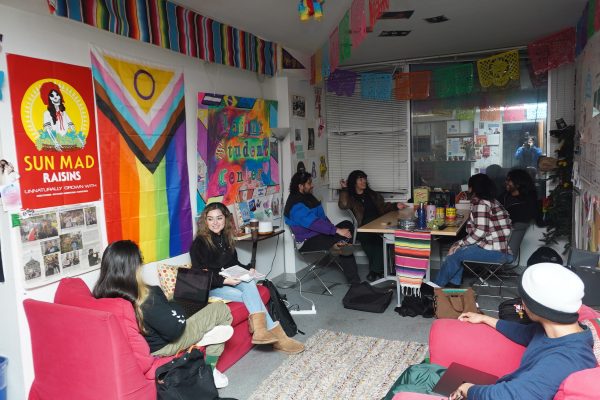
Identity/Culture
34.3% of the enrolled student population at SF State is Hispanic or Latinx, according to the National Center for Education Statistics. Sharing and embracing Latinx culture enriches personal identity and contributes to a more inclusive society, breaking down barriers and fostering an appreciation for diversity according to Abadía-Rexach.
Aguilar shows pride in their culture through fashion with inspiration coming from their subculture of Cholas. According to Cholos and Cholas: a Deep Dive into Chicano Culture, Cholas are members of the Chicano community that are known for their distinct fashion over the years. They found a safe space in MELA (Movimiento Estudiantil Para La Liberación) De San Pancho formally known as MEChxA (Movimiento Estudiantil Chicanx De Aztlán) De San Pancho, a student organization on campus that focuses on working on community building and hosting social-political events, and are still trying to find those safe spaces within other organizations.
“I think everybody’s definition of what qualifies as a Latinx person is very different, and how severe scrutiny you’re gonna be subject to is also person to person,” Aguilar said. “Personally, as long as you don’t bring up your Latinidad only when it’s convenient and hold roots to your culture and heritage and practice some customs but don’t have to, I think that qualifies you as Latinx in my definition.”
Abadía-Rexach finds that many of her students have a hard time with identity within their ethnicity and race, so she believes it’s important to teach them about these backgrounds. She believes students can claim as many identities as they want as long as they feel comfortable.
“You don’t pick where you are born, but you can pick where you feel you are from in terms of your pride,” Abadía-Rexach said.



